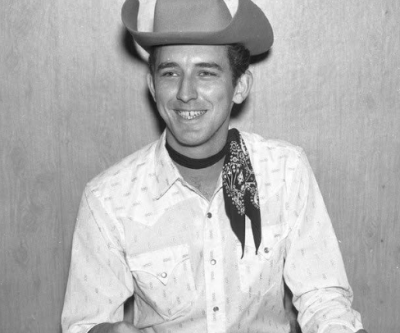December 20, 2018
Tuesday
8:00 p.m.
Minneapolis, MN
Test schedule
A live performance with Robin and Linda Williams at the Cedar Cultural Center
May 20, 2018
Sunday
3:00 p.m.
Lexington, MA
Lexington, MA
A live performance at the Saenger Theatre
April 10, 2018
Tuesday
8:00 p.m.
Tulsa, OK
Tulsa, OK
A live performance at the Brady Theater
March 17, 2018
Saturday
8:00 p.m.
Long Beach, CA
Long Beach, CA
A live performance at the Carpenter Performing Arts Center
March 15, 2018
Thursday
7:00 p.m.
Mobile, AL
Mobile, AL
A live performance at the Saenger Theatre
“When Dead” by Thomas Hardy. Public domain. (buy now)
It will be much better when
I am under the bough;
I shall be more myself, Dear, then,
Than I am now.
No sign of querulousness
To wear you out
Shall I show there: strivings and stress
Be quite without.
This fleeting life-brief blight
Will have gone past
When I resume my old and right
Place in the Vast.
And when you come to me
To show you true,
Doubt not I shall infallibly
Be waiting you.
It’s the birthday of novelist Barbara Pym, (books by this author) born in Oswestry, England (1913). Growing up, she wanted to be a writer. She went to Oxford, and then she settled back home in Oswestry and wrote a novel, Some Tame Gazelle, the story of two middle-aged spinster sisters. She tried to publish it, but it was widely rejected. So she wrote more stories, and another novel, but she couldn’t get those published either.
During World War II, she worked for the censorship office and for the Women’s Royal Naval Service, who sent her to Naples. Then she moved back to London and got a job with the International African Institute, and in 1950 she finally published Some Tame Gazelle, which got great reviews — everyone was impressed that she had so perfectly captured life as a middle-aged woman even though she was only 22 when she wrote it. For a few years after that, she was incredibly prolific — she published Excellent Women (1952), Jane and Prudence (1953), Less than Angels (1955), A Glass of Blessings (1958), and No Fond Return of Love (1961), all quiet, funny novels where not much happens. She gets compared to Jane Austen because the novels are comedy-of-manners stories and social satire.
In 1963, she submitted An Unsuitable Attachment, but her publisher told her that her style of writing was out of date. She tried revising it and sending it to 20 other publishers, but they all rejected it. She wrote another novel, and that, too, was rejected by everyone, as was a third. In 1970, she wrote: “I get moments of gloom and pessimism when it seems as if nobody could ever like my kind of writing again.”
And for 16 years she didn’t publish any novels. She had a small but very loyal following, which included the poet Philip Larkin, and the two of them started writing letters in 1961. Larkin wrote to her: “It seems such a sad state of affairs if such tender, perceptive and intelligent work can’t see the light, just because it won’t ‘go’ in America, or some tasteless chump thinks it won’t ‘go’ in paperback.”
But then he got the chance to make a big difference for Pym. In the January 21, 1977 edition of the Times Literary Supplement, writers and scholars were asked to nominate the “most underrated writer of the century.” Pym was the only living writer who got two nominations — one from Larkin and one from biographer and scholar Lord David Cecil. And suddenly, she was famous. In the next three years, she published two novels, she was the subject of a BBC program, and Quartet in Autumn (1977), which had been rejected the year before, was nominated for the Booker Prize. Her early novels came back into print, she was published in the United States, and her work was translated into many other languages. But she had cancer, and she died just three years later in 1980.
On this day in 1692, the Court of Oyer and Terminer convened in Salem Town, Massachusetts, beginning what would become known as the Salem Witch Trials. The hysteria had begun in Salem Village (now Danvers, Massachusetts) in January of that year; a few preteen and teenage girls, including the daughter of Samuel Parris, the village’s minister, began acting strangely and having fits, insisting that they were being poked and pinched. The local doctor was at a loss to explain the behavior, and concluded that they must be bewitched. When the girls were pressured to name their tormentors, they blamed Tituba, the Parrises’ Caribbean slave, and two eccentric social outcasts, Sarah Good and Sarah Osborne. Paranoia mounted, with more teenage girls suddenly joining the ranks of the afflicted; they were no longer expected to be “seen and not heard,” but were now the center of attention, even crying out and disrupting church meetings without being punished. They began accusing reputable churchgoers, often people their parents had feuded with for years. Alibis were useless because the afflicted girls would say that the accused had sent her specter to torment them, and anyone who spoke out against the proceedings soon found the accusing fingers pointing at them.
Within a matter of weeks, warrants were issued for dozens of accused witches, and the jails were full to bursting. Governor William Phipps ordered the formation of the Special Court of Oyer and Terminer — which meant “to hear and determine” — to try the backlog of cases. The first case brought before the grand jury was that of Bridget Bishop, a tavern owner, who had attracted the negative attention by virtue of the fact that she played shuffleboard and dressed in unsuitable clothing. She was found guilty and sentenced to hang on June 10, the first of 19 executions that took place over the next four months. A 20th victim, Giles Cory, was tortured to death when he refused to enter a plea. The hysteria spread to nearby towns, and feuding neighbors began to see it as a handy way to get revenge. Many of the accused people confessed to witchcraft to escape execution, because confession meant you were repentant, and it was up to God to handle your punishment. Those who refused to confess — either on moral grounds or because confession meant they would forfeit their property — were executed.
In October, Governor Phipps abruptly dissolved the Court of Oyer and Terminer and prohibited further arrests, maybe because Puritan ministers were calling for an end to the trials, or maybe because the afflicted girls had accused Phipps’s wife of witchcraft. Over an eight-month period, more than 200 people had been accused and imprisoned, and several had died in jail. Some of the judges and examiners later expressed remorse. Examiner John Hale wrote in 1695, “Such was the darkness of the day, and so great the lamentations of the afflicted, that we walked in the clouds and could not see our way.”
It’s the birthday of Harlem Renaissance writer Dorothy West (books by this author), born in Boston, Massachusetts (1907). Her father was an ex-slave who’d built a trade as a wholesale banana merchant, and his success meant that theirs was one of the first black families in America to own a vacation home on Martha’s Vineyard.
West’s mother was light-skinned, and had been sent by her Southern family to the North when she was young, afraid that her looks would attract unwanted attention from white men. In Boston and Martha’s Vineyard, West’s mother believed, they could overcome racism with enough money. West wasn’t content to live in a bubble, so at 19, when she went to New York City to receive an award for a story she’d written for Opportunitymagazine (she’d tied with Zora Neale Hurston) she stayed. She met the young writers of the Harlem Renaissance, was given the nickname “The Kid” by Langston Hughes. When the Depression hit, West started the magazine Challenge with $40 to “recapture the literary vitality of the Harlem Renaissance” and to publish up-and-coming black writers like Ralph Ellison and Richard Wright. After the magazine ultimately failed, West became a welfare investigator, worked for the WPA project, and began writing her own stories that explored race and class.
By the mid-1940s, West left New York and settled permanently in her family’s childhood vacation home on Martha’s Vineyard, where she worked as a reporter for the local paper and wrote her first novel, The Living is Easy (1948). The book was well received but did not sell many copies. Nearly 50 years passed before West published again, encouraged by Jacqueline Kennedy Onassis. Her second novel, The Wedding (1995) is set on Martha’s Vineyard in the 1950s, and tells the story of a wealthy black family’s struggle with identity and race as the youngest daughter prepares to marry a white jazz musician. West writes: “Identity is not inherent. It is shaped by circumstance […] and resistance to self-pity.”
It’s the birthday of Thomas Hardy (books by this author), born in Stinsford, England, in 1840. His father was a mason, and the family didn’t have the money for Hardy to go to college. His formal education ended at the age of 16, when he was apprenticed to an architect. Hardy was already well versed in Latin and French, and had taught himself the Greek and Roman classics, as well as Shakespeare.
Hardy suspended his apprenticeship to take a position as an architect’s assistant in London, possibly as a way to make a fresh start after a series of heartbreaks. Able to attend public lectures by famous writers, watch plays performed live, and befriend poets like Robert Browning, Hardy was inspired to try writing his own poetry—but after failing to get any published, he left London, resumed his apprenticeship, and started writing fiction, which he figured was likelier to make money.
It did, eventually. After publishing three novels without attaching his name to them, Hardy wrote Far From the Madding Crowd (1874), which was so successful he was able to quit his job and pursue a literary career. He published ten novels over the next 25 years, but when his last two—now his most famous—Tess of the d’Urbervilles (1891) and Jude the Obscure (1895) created scandal for candid depictions of sex, Hardy became disgusted with fiction altogether. As he wrote years later, “Then somebody discovered that Jude was a moral work—austere in its treatment of a difficult subject—as if the writer had not all the time said in the Preface that it was meant to be so. Thereupon many uncursed me, and the matter ended, the only effect of it on human conduct that I could discover being its effect on myself—the experience completely curing me of the further interest in novel-writing.” He returned to his original love, poetry, publishing eight collections, including Wessex Poems (1898) and Satires of Circumstance (1914).






